As is par for the course, Apple announced new things today at it’s annual Worldwide Developers Conference keynote. And considering how popular watchOS is, of course the platform was going to get stage time at this year’s event. That’s why we have watchOS 9, which comes with a plethora of new features, especially those built towards health-related functionality. Here’s a look at what’s new in the smartwatch’s upcoming update.
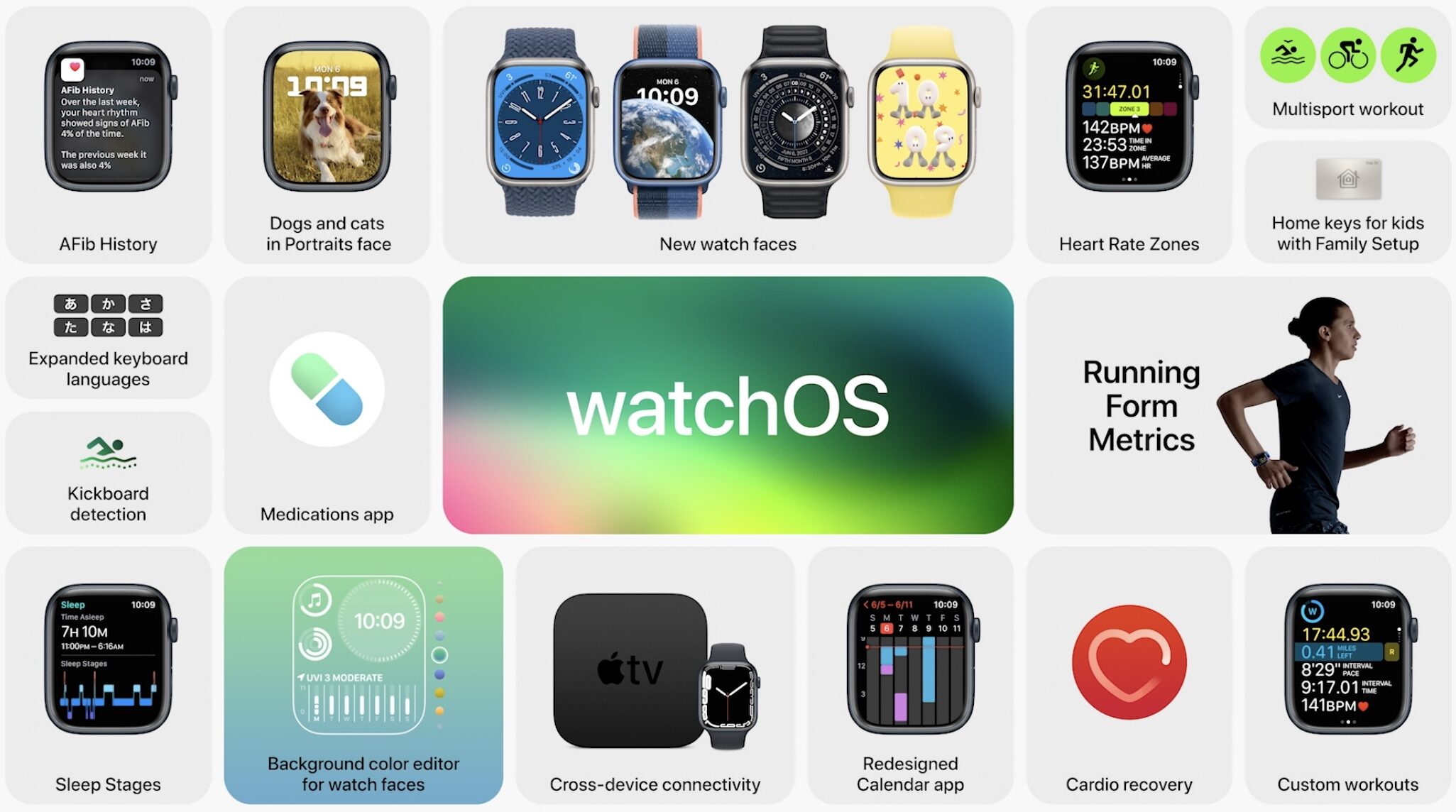
Apple has introduced even more customizable watch faces, which is one of the more oft-requested features for the company’s smartwatch. On top of that, there is an even more powerful Workout app, which can show even more information to the user, and a brand new AFib History feature that can help individuals keep track of their health information right on their wrist.
So, let’s dig in a bit:
Watch faces
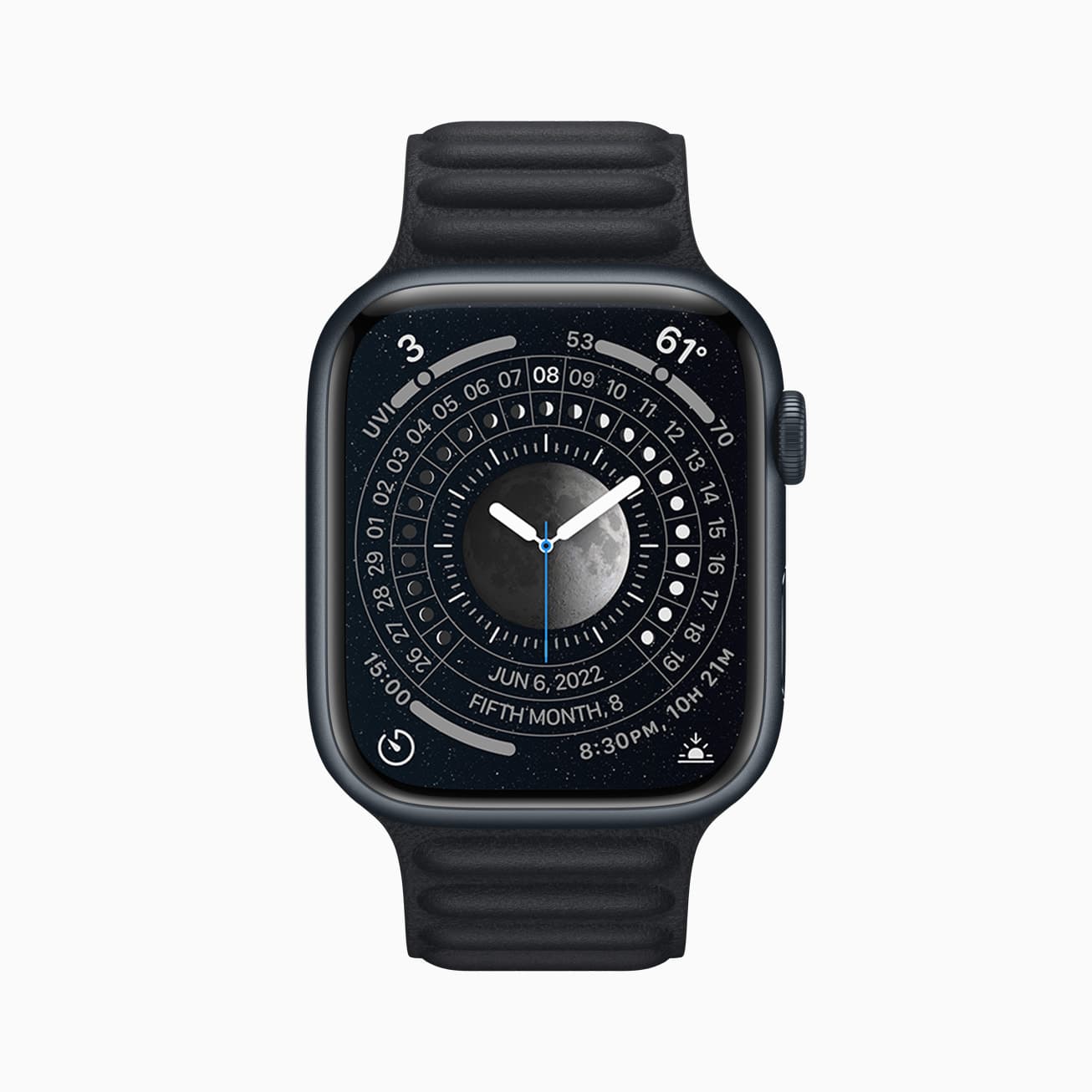
First up, brand new watch faces. There are four to choose from: Lunar, which, as Apple describes, “depicts the relationship between the Gregorian calendar and lunar calendar, used in many cultures such as Chinese, Islamic, and Hebrew.” Next up, Playtime, a “dynamic piece of art that’s unique to Apple Watch and created in collaboration with artist Joi Fulton.” Third is the new Metropolitan, a “classic, type-driven watch face where the style changes as the Digital Crown is rotated.” And, finally, the new Astronomy watch face that is an “original face that has been completely remastered and features a new star map and current cloud data.”
And Apple has made changes to the existing watch faces available in watchOS 9 as well:
watchOS 9 introduces enhanced and modernized complications on some of the most classic watch faces, such as Utility, Simple, and Activity Analog, along with background color editing for Modular, Modular Compact, and X-Large for additional personalization. The new Portraits face showcases the depth effect on more photos, including cats, dogs, and landscapes, while Chinese scripts have been added as options for California and Typograph watch faces. Focus now allows users to select an Apple Watch face to automatically appear when they start a specific Focus on iPhone, such as the Photos face during a Personal Focus, helping users stay in the moment.
Revamped Workout app
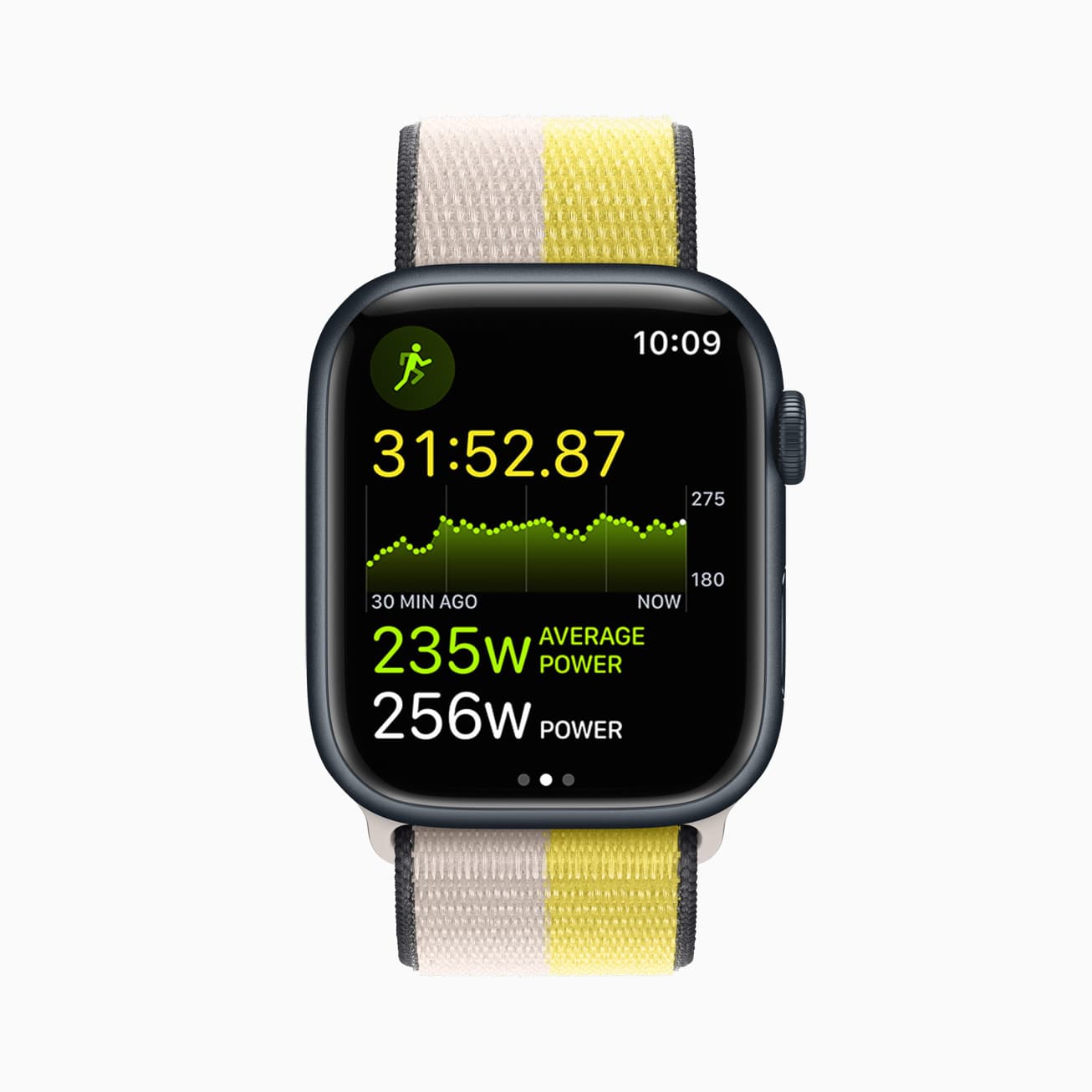
The new Workout app is new with richer details, offering up more information for the folks who use one of the most popular apps on the smartwatch. It finally taps into the functionality of the Digital Crown as well, letting users switch between Workout Views by using the hardware. This offers up more information for training options. There are new Heart Rate Zones, too, letting users quickly see how well their heart rate is doing per workout. And much more:
Heart Rate Zones, which can be manually created or automatically calculated using personalized Health data, can be used to monitor the intensity of a workout. Interval training is an important part of any training plan, and in watchOS 9, the Workout app introduces Custom Workouts, which can be used to create a structured workout that can include work and rest intervals. New alerts, including pace, power, heart rate, and cadence, can be added to guide users throughout the workout.
Triathletes are getting more features, too:
For triathletes, the Workout app now supports a new Multisport workout type that automatically switches between any sequence of swimming, biking, and running workouts, using motion sensors to recognize movement patterns. When each workout is complete, a redesigned summary page in the Fitness app offers additional details with interactive charts for more precise analysis.
For the runners
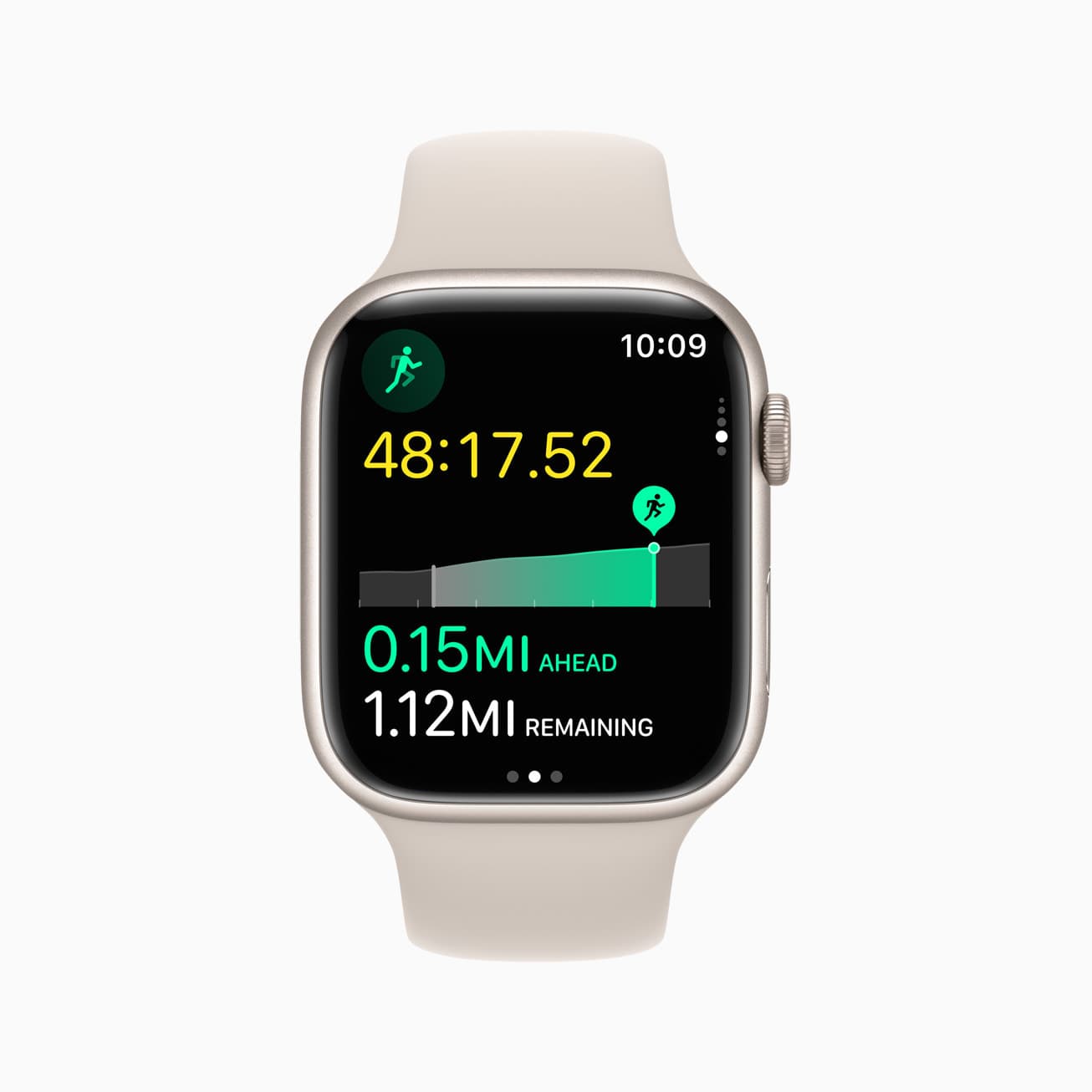
There is even more information on hand (or wrist) for runners. The Apple Watch running watchOS 9 can now detect various other details, including Ground Contact Time (GCT), stride length, and Vertical Oscillation. These can all be added as metric views within Workout Views. Summaries are available in the Health app and the Fitness app as well.
And more:
Users can choose to race against their best or last result on frequently used routes, and receive alerts during the workout for being ahead or behind their pace, as well as when going off route. Additionally, a new pacer experience lets users choose a distance and goal for the time in which they want to complete a run, and calculates the pace required to achieve the goal. During the workout, they can follow the pace alerts and metrics provided.
And the swimmers
Apple also included Kickboard detection for the swimmers out there:
Kickboard detection has been added as a new stroke type for Pool Swim workouts, using sensor fusion on Apple Watch to automatically detect when users are swimming with a kickboard and classify the stroke type in the workout summary along with distance swam. Swimmers can now track their efficiency with a SWOLF score — a stroke count combined with the time, in seconds, it takes to swim one length of the pool. Users can view their SWOLF average for each set in the workout summary.
Fitness+
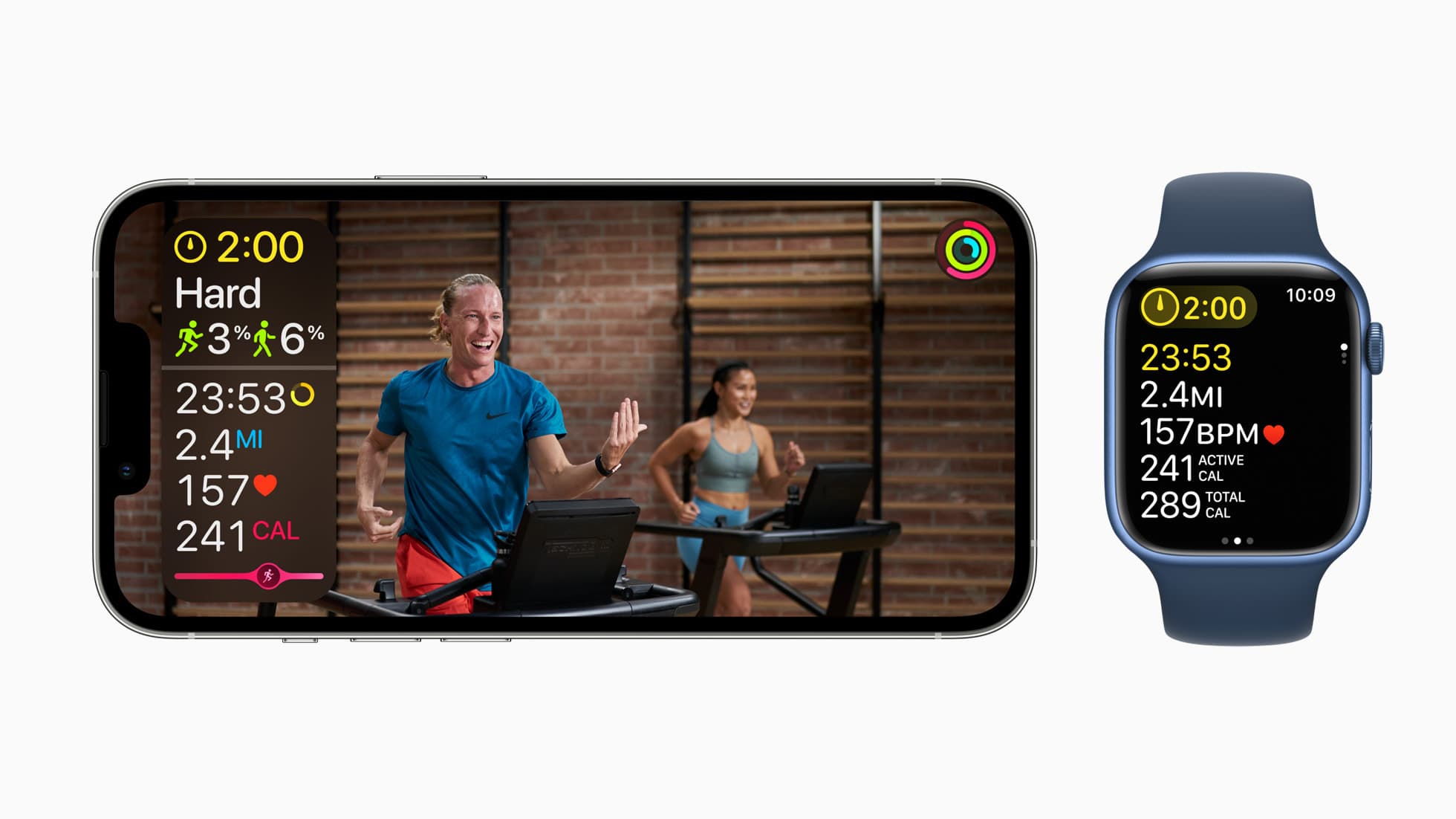
With changes in watchOS 9, Fitness+ is actually getting better, too, thanks to on-screen guidance being added to the mix:
With watchOS 9, Fitness+ workouts now display on-screen guidance in addition to trainer coaching to help users get the most out of workouts, including: Intensity for HIIT, Cycling, Rowing, and Treadmill; Strokes per Minute (SPM) for Rowing; Revolutions per Minute (RPM) for Cycling; and Incline for walkers and runners in Treadmill.
And AirPlay support is getting better, too:
Fitness+ subscribers without Apple TV can now use AirPlay to stream workouts and meditations with on-screen metrics to compatible third-party TVs and devices, allowing them to train anywhere, anytime.
When you’re sleeping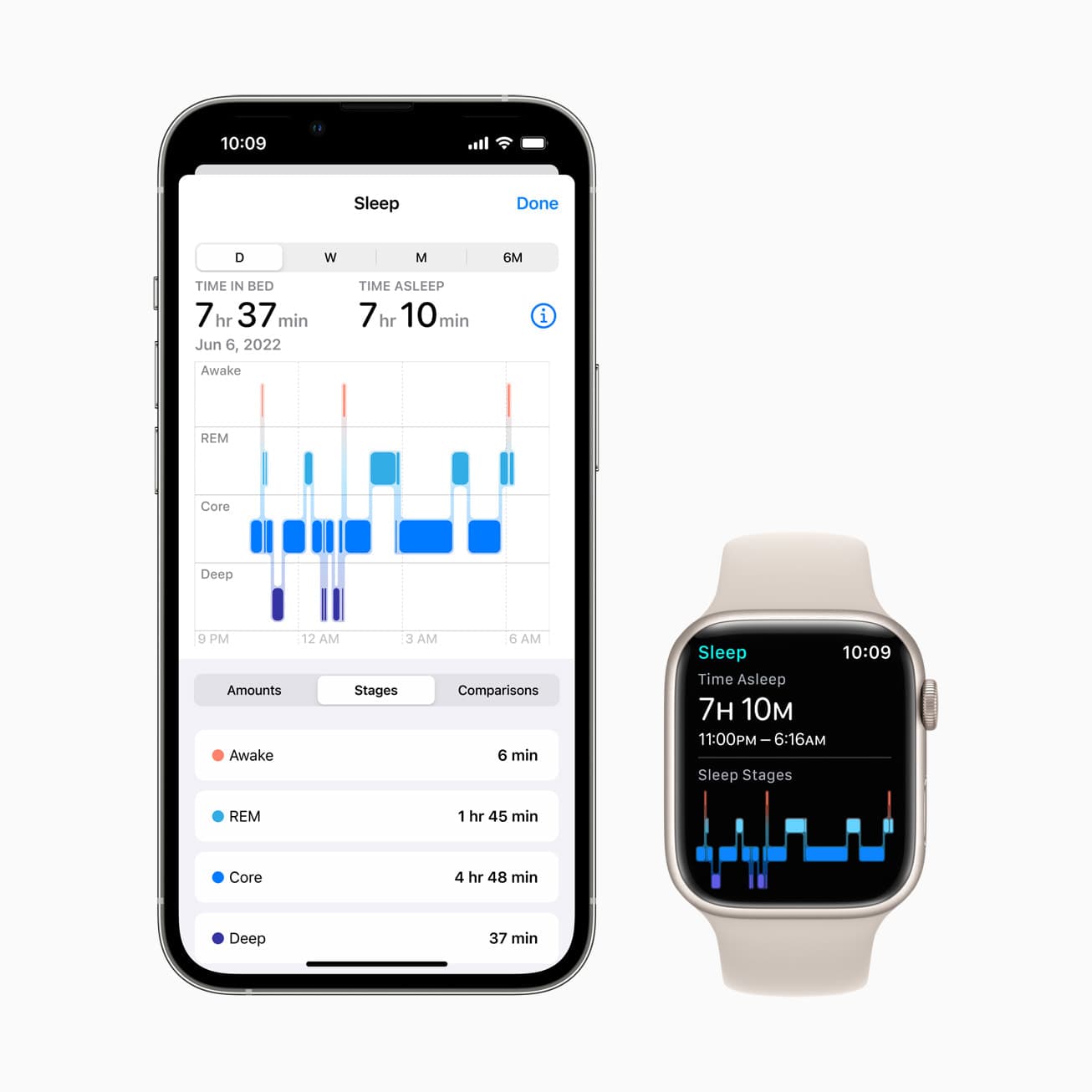
Apple Watch with watchOS 9 is getting even better information related to sleep, too, thanks to Sleep Insights:
The Sleep experience on Apple Watch already empowers users to create Wind Down and Bedtime schedules, as well as track their sleep to help them meet their goals. Sleep tracking in watchOS 9 provides even more insights with the introduction of sleep stages. Using signals from the accelerometer and heart rate sensor, Apple Watch can detect when users are in REM, Core, or Deep sleep. Users will see sleep stage data on Apple Watch in the Sleep app and can view more detailed information, like time asleep, alongside additional metrics, like heart rate and respiratory rate, in sleep comparison charts in the Health app on iPhone.
AFib History
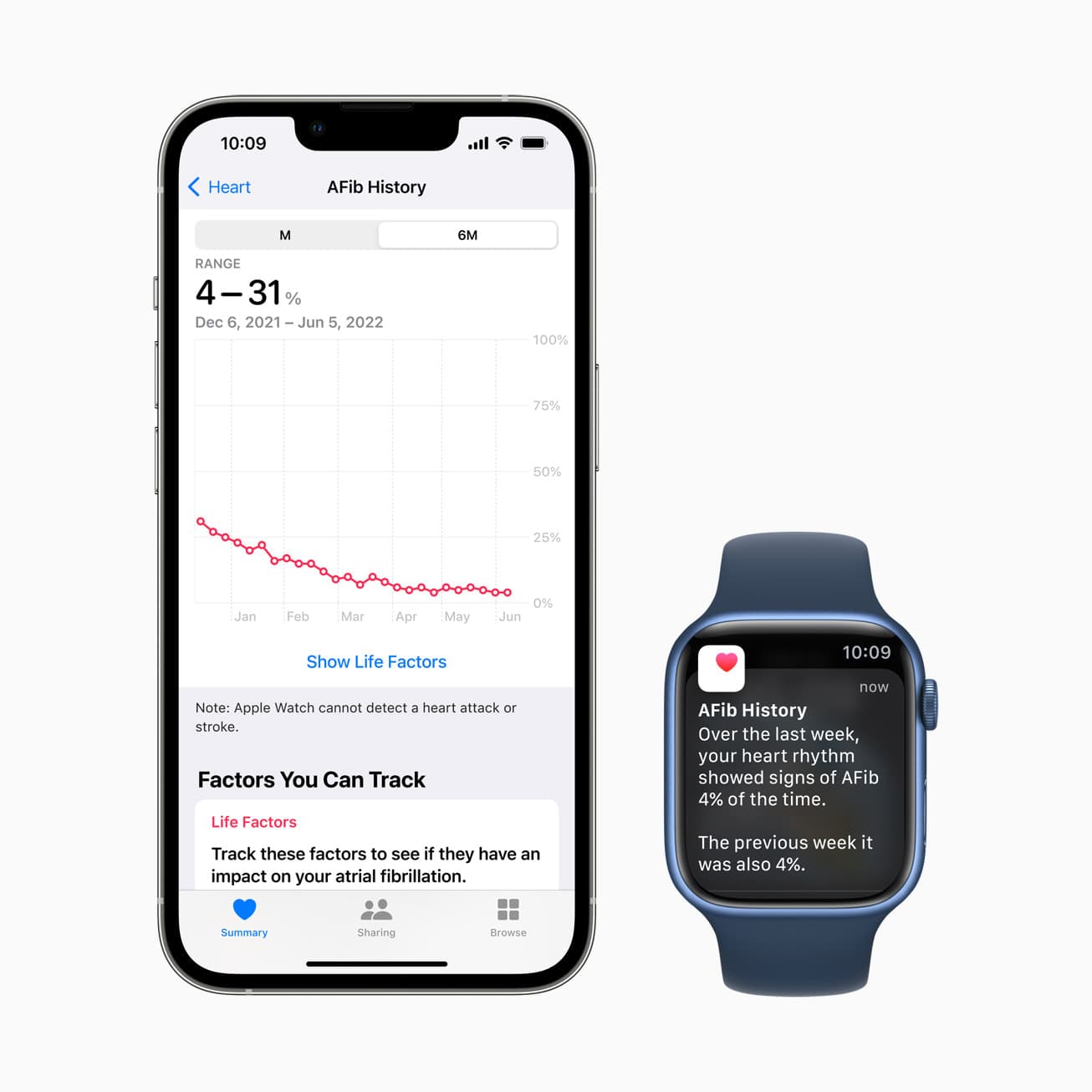
One of the biggest new additions to the Apple Watch is AFib History. This new feature makes it simple and quick for users to track their history of experiencing atrial fibrillation (AFib), which can help those stay aware of how long they have been experiencing issues.
With watchOS 9, users who are diagnosed with AFib can turn on the FDA-cleared AFib History feature2 and access important information, including an estimate of how frequently a user’s heart rhythm shows signs of AFib, providing deeper insights into their condition. Users will also receive weekly notifications to understand frequency and view a detailed history in the Health app, including lifestyle factors that may influence AFib, like sleep, alcohol consumption, and exercise.
Users will also be able to download a PDF with all of the relevant information as well.
Medications
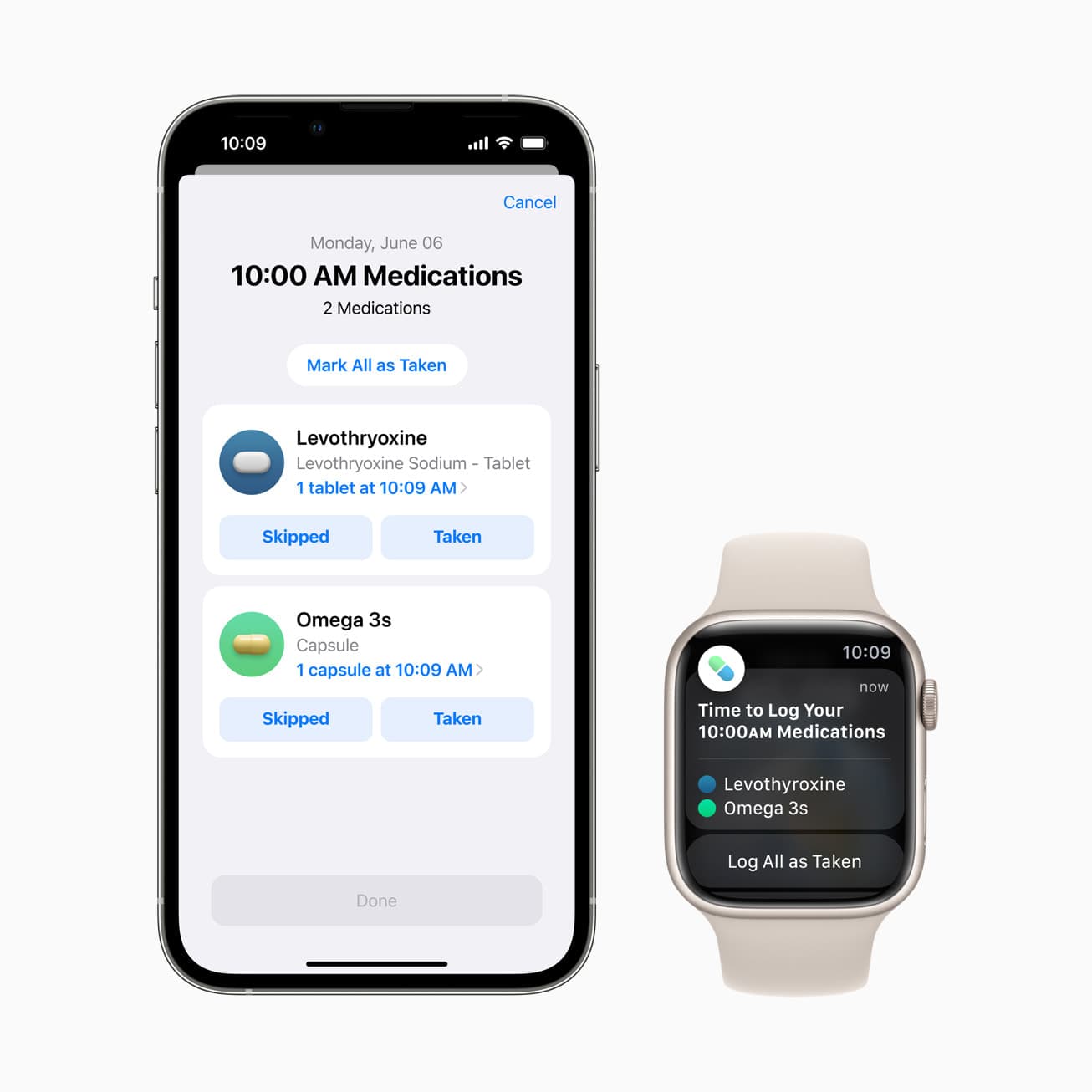
Another one of the major hallmark features for watchOS 9 is medication tracking. This will let users quickly and easily track and manage their medications on a regular basis, and even set notifications for when they need to take their medications.
Custom schedules can be created for each medication, whether it needs to be taken multiple times a day, once a week, or as needed, and users can set up reminders to help keep them on track. In the US, users can receive an alert if there are potential critical interactions with medications they have added to the Health app.
The other details
- Staying informed in the moment is a powerful part of the Apple Watch experience, and in watchOS 9, notifications have been redesigned to be less interruptive while still being impactful, arriving with new slimline banners when Apple Watch is being actively used.
- Family Setup now supports the Home app so a child can be invited as a member to control HomePod speakers and smart home accessories.4 They can also use home keys and hotel keys in Apple Wallet.
- With new Quick Actions on Apple Watch, users can do even more with a double-pinch gesture, including answer or end a phone call, take a photo, play or pause media in the Now Playing app, and start, pause, or resume a workout. This builds on the innovative technology used in AssistiveTouch on Apple Watch, which gives users with upper body limb differences the option to control Apple Watch with gestures like a pinch or a clench without having to tap the display.
- Apple Watch becomes more accessible than ever for people with physical and motor disabilities with Apple Watch Mirroring, which helps users control Apple Watch remotely from their paired iPhone. With Apple Watch Mirroring, users can drive Apple Watch using iPhone’s assistive features like Voice Control and Switch Control — so they can navigate Apple Watch by using their voice, sound actions, head tracking, and external Made for iPhone switches as alternatives to tapping the Apple Watch display.5 Apple Watch Mirroring uses hardware and software integration, along with advances built on AirPlay, to ensure users who rely on these mobility features can benefit from unique Apple Watch apps like Blood Oxygen, Heart Rate, Mindfulness, and more.
- The QWERTY keyboard on Apple Watch Series 7 adds support for French, German, Italian, Japanese, Portuguese (Brazil), and Spanish (Mexico, Spain, Latin America).
- Apps that are actively in use are now promoted over the rest of the apps in the redesigned Dock, making it easier for users to quickly return to them.
- The Reminders app now lets users add or edit key details such as date and time, location, tags, and notes.
- Stay productive with the updated Calendar app by creating new events directly from Apple Watch. For the first time, users can access a Week view in addition to updated List, Day, and Month views to support more scrolling through calendar events.
- Cardio Recovery is a useful fitness metric that can be an indicator of cardiovascular health. Apple Watch now provides estimates of Cardio Recovery after an Outdoor Walk, Run, or Hiking workout, even when the workout does not reach peak intensity. This metric can be tracked over time in the Health app.
- New APIs allowdevelopers to build best-in-class third-party apps, with CallKit and share sheet support, access to Photos picker, and the ability to integrate watchOS apps with Apple TV.
Availability
Apple says watchOS 9 will be available later this fall. It will be a free update when it arrives.